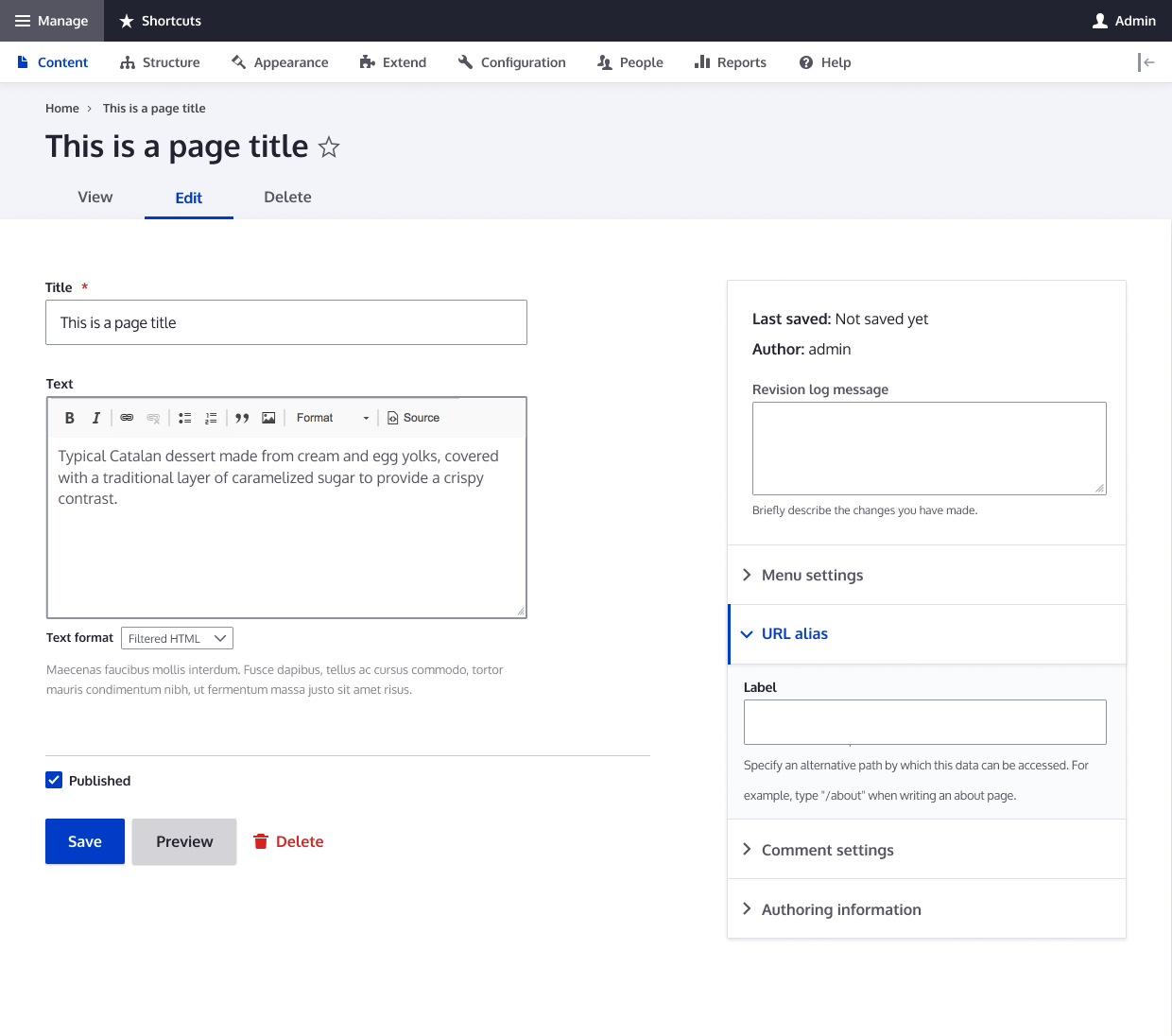It’s here! While it may seem like just yesterday that Drupal 9 arrived, the Drupal community has obviously been hard at work releasing Drupal 10 this past December.
Drupal, an open-source Content Management System (CMS), is increasing in popularity as new versions tout continued innovation and improvements. Coupled with relatively low cost to implement and scalable architecture, its vast features and flexibility meet the demands of today’s modern website requirements for businesses and organizations globally. Let’s take a review of what’s new with the latest version.

In general, most seem to agree that Drupal 10 does not come with major upgrade headaches or a learning curve for content administrators. The upgrade path and UI should feel seamless for current users. But what are the benefits? Here’s what Bluetext website developers are excited about:
- New themes!
- The administration theme Claro, replacing Seven, provides a modern look while remaining familiar to content editors for ease of transition.

- The administration theme Claro, replacing Seven, provides a modern look while remaining familiar to content editors for ease of transition.
- The new front-end theme Olivero, replacing Bartik, works with the popular Layout Builder and will be WCAG AA compliant.

- The Starterkit Theme, according to Drupal, will provide a theme to be copied for front-end developers to easily start from, while also allowing Drupal to provide more frequent updates to the default markup and CSS shipped as part of Drupal core. Sub-theming will still be possible.
- Automatic Updates, which will reduce the maintenance burden for core updates as they are automatically integrated as they are released
- Project Browser, though still in its infancy stages, is intended to provide a one-stop shop for exploring and installing contributed modules.

- Enhanced content editing as the WYSIWYG is replaced with CK Editor 5, including cleaner and easier copy and paste functionality from external documents.
- Better decoupled development experience, in particular for menus and URLs, as Drupal lays the groundwork for future headless capabilities.
This may be enough to sell you on the upgrade now, but if not, keep in mind that Drupal 9 support will end in November 2023. It’s better to begin the upgrade process sooner rather than later to mitigate any risk. At a high level, you’ll need to do the following:
- Upgrade in order. Meaning, if you are on Drupal 8, you’ll need to upgrade to Drupal 9 before 10.
- Test your site for readiness using Drupal’s Upgrade Status tool. The tool will validate your compatibility requirements and provide helpful planning.
- The Drupal Rector tool can help fix deprecated code and ensure all of your modules are ready.
- As with most upgrades, a number of core modules and deprecated code with be removed.
- Some use cases of jQuery will also be replaced with modern JavaScript components in an effort to move away from browser-dependent functionality.
- Ensure you have also upgraded to PHP 8.1 and Symfony 5 or 6.
Whether you’re looking to upgrade or are considering Drupal for the first time, an experienced digital marketing agency, like Bluetext, can ensure your project benefits from everything Drupal 10 has to offer. Get in touch to learn more about our website development services!

